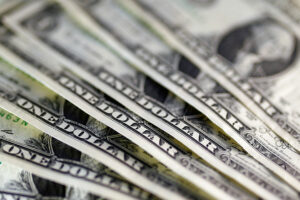THE COMBINED ASSETS and loans of the Philippines’ biggest banks rose by double digits in the third quarter, amid increased economic activity.
The latest edition of BusinessWorld’s quarterly banking report showed that the aggregate assets of 44 universal and commercial banks (U/KBs) grew by 11.17% year on year to P25.98 trillion in the July-to-September period from P23.37 trillion a year ago.
The third-quarter asset growth was faster than the 10.7% logged in the second quarter, and the 8.78% in the same period in 2023. It was also the quickest in six quarters or since the 11.25% in the first quarter of 2023.
Meanwhile, total loans of these big banks surged by 15.07% to P13.16 trillion in the third quarter, faster than 7.01% a year ago.
In the July-to-September period, lending growth was the fastest in 23 quarters or since the 15.13% posted in the fourth quarter of 2018.
Heightened lending activity in the third quarter may have reflected improving credit demand as the central bank began its easing cycle in August.
At its Aug. 15 meeting, the Bangko Sentral ng Pilipinas (BSP) reduced policy rates by 25 basis points (bps), the first rate cut in nearly four years. This brought the benchmark rate to 6.25% from the over 17-year high of 6.5%.
The BSP followed it up with another 25-bp cut at its October meeting, bringing the key rate to 6%.
However, gross domestic product (GDP) growth slowed to 5.2% in the third quarter from 6.4% in the second quarter. This was the weakest growth in five quarters or since the 4.3% expansion in the second quarter of 2023.
Data also showed the share of bad loans to the total loan portfolio, also known as the nonperforming loan (NPL) ratio, rose to 3.28% from 3.25% in the previous quarter but fell from 3.62% a year ago.
Loans are considered nonperforming if any principal and/or interest are left unpaid for over 90 days from the contractual due date or accrued interests for more than 90 days have been capitalized, refinanced, or delayed by agreement.
On the other hand, the net NPL ratio went up to 1.63% from 1.49% in the second quarter.
The banks’ median return on equity (RoE), which is an indicator of profitability, slipped to 8.15% in the third quarter from 9.42% in the same period a year ago.
The RoE, the ratio of net profit to average capital, measures the amount that shareholders make on every peso they invest in a company.
Additionally, the big banks’ median capital adequacy ratio (CAR) — which reflects their ability to absorb losses from risk-weighted assets — stood at 19.65% during the period. This was lower than the 21.54% a year earlier and the 18.8% in the second quarter.
The ratio remained well above the regulatory minimum of 10% set by the BSP as well as the international minimum standard of 8% under the Basel III framework.
The leverage ratio — which gauges the institution’s ability to absorb shocks by measuring the bank’s capital relative to total exposure — stood at a median of 11.53% during the period. This exceeded the central bank’s 5% guideline as well as the international standard of 3%.
Meanwhile, the net interest margin (NIM) of these big banks slipped to 3.91% from 3.62% in the previous quarter.
NIM is an indicator of banks’ investing efficiency by dividing annualized net interest income by average earning assets.
In the third quarter, the return of assets (RoA), which measures the profit generated per peso of an asset, grew to 1.69% from 1.46% in the second quarter.
BDO Unibank, Inc. (BDO) remained the largest bank in terms of total assets with P4.73 trillion as of the third quarter. It was followed by Land Bank of the Philippines (LANDBANK) with P3.43 trillion and Metropolitan Bank & Trust Co. (Metrobank) with P3.42 trillion.
The Sy-led bank also led the industry in lending with P3.06 trillion in loans issued, followed by Bank of the Philippine Islands (BPI) with P2.12 trillion and Metrobank with P1.68 trillion.
In terms of deposits, BDO topped the list with P3.74 trillion, followed by LANDBANK with P3.04 trillion and BPI with P2.49 trillion.
Among banks with at least P100 billion assets, Security Bank Corp., recorded the fastest year-on-year asset growth with 40.73%, followed by The Hongkong & Shanghai Banking Corp. Ltd. (26.63%) and Citibank NA (21.94%).
Meanwhile, Philippine Trust Co. was the most aggressive lender, with loan growth at 33.10%, followed by Maybank Philippines, Inc. with 30.57% and Security Bank Corp. with 27.20%.
BusinessWorld Research has been tracking the financial performance of the country’s large banks quarterly since the late 1980s using banks’ published statements. — Abigail Marie P. Yraola















